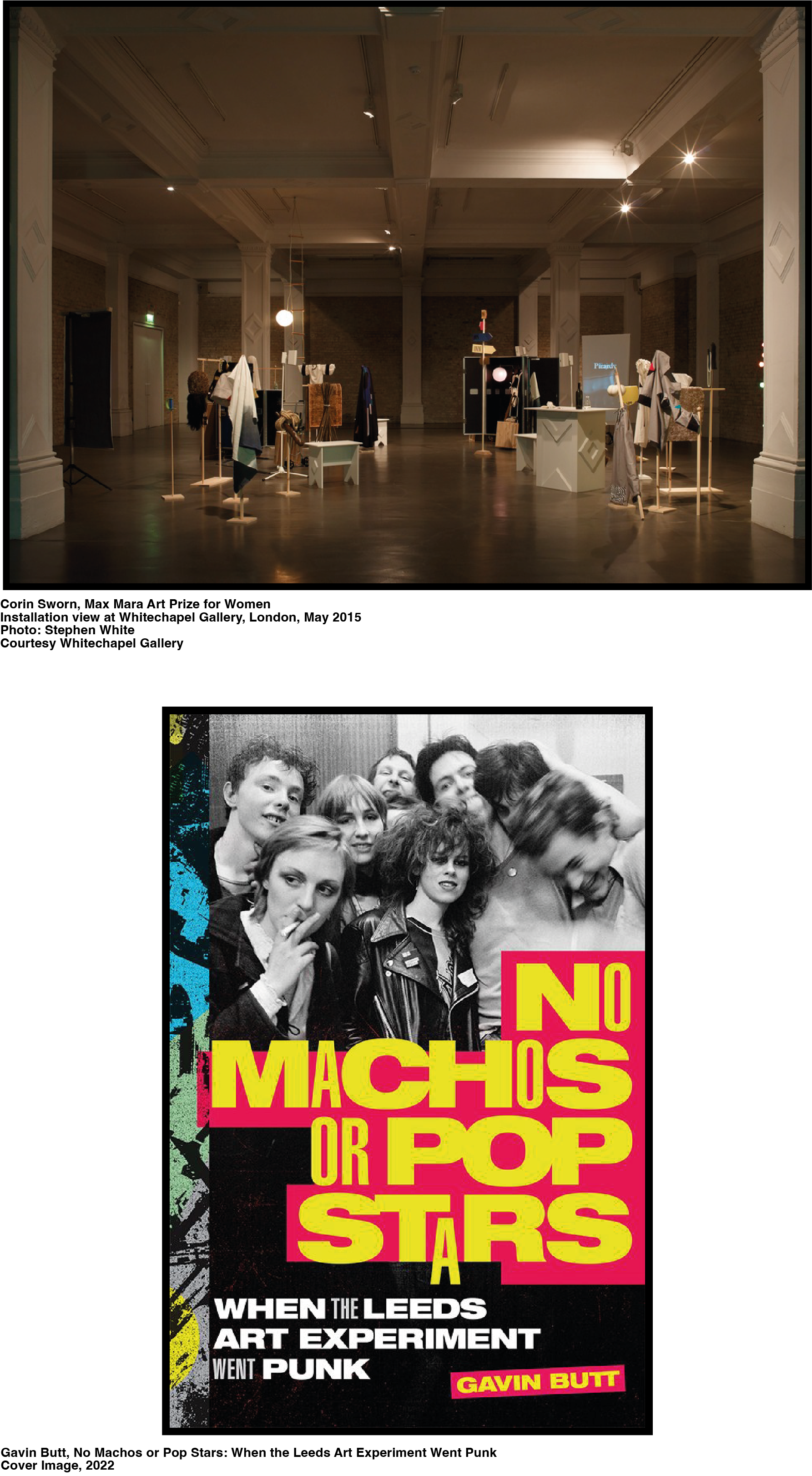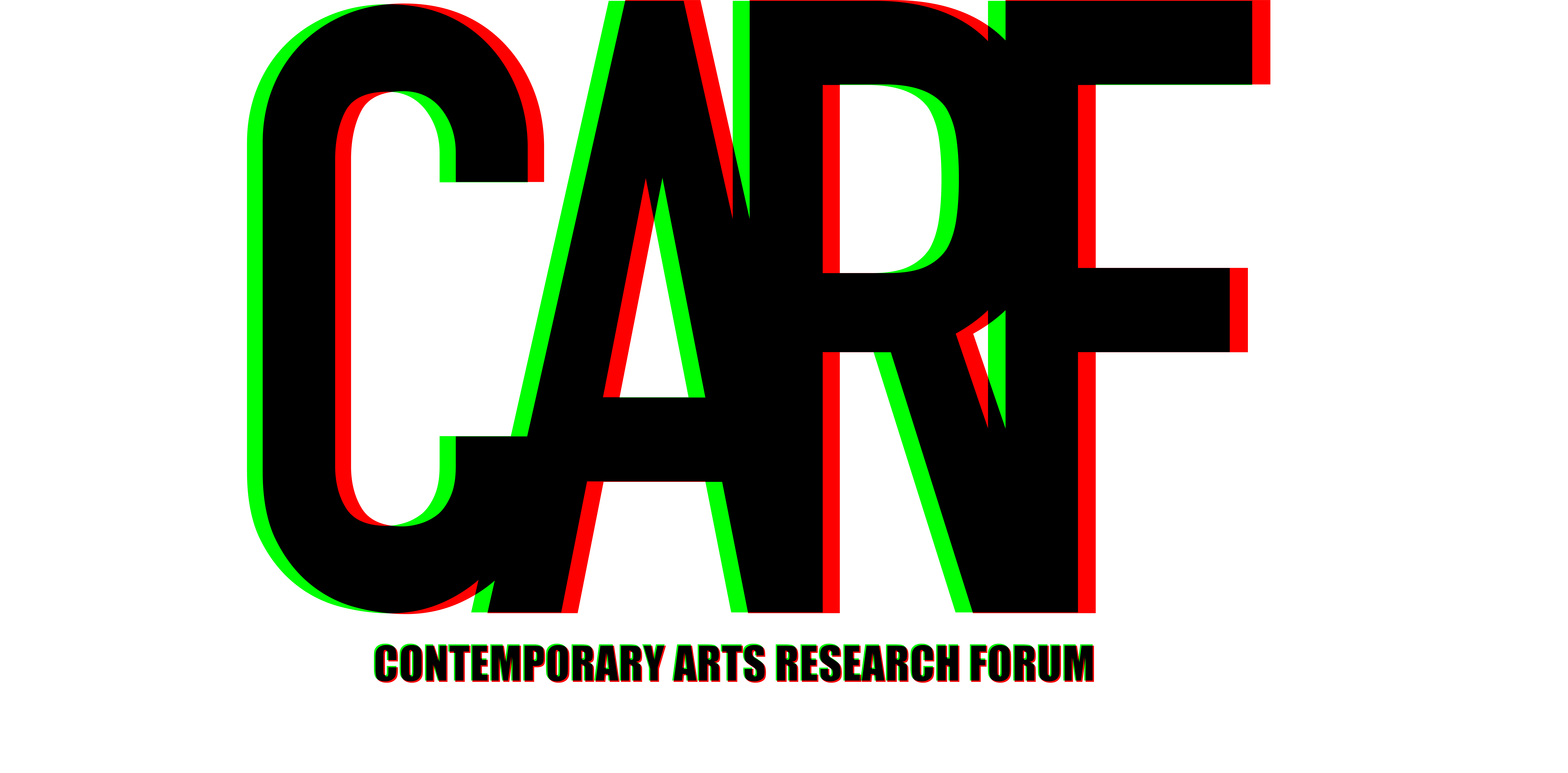
CARF, alongside the Collaborative and Curatorial Practices research group at Northumbria University, held Performance Lectures on May 4 2023. For the second iteration of our extended Symposium format we were joined by a phenomenal line-up of international artists working across performance, painting, film, animation and photography.
Our first speaker was Nicola Singh who’d completed their PhD with BXNU in 2016. They talked about their development of a ‘Thesis by Performance’ and processes of critiquing the power dynamics at play within academic research and institutions.

Our second guest was artist, curator and educator Abdullah Qureshi who gave an insight into their ongoing doctoral research project Mythological Migrations: Imagining Queer Muslim Utopias.

Monica Heller joined us online who to talk to us about their practice, making processes and the experience of representing Argentina at the 2022 Venice Biennale with their show The Importance of the Origin will be Imported by the Origin of the Substance. Below is a transcript of Monica’s conversation with Professor Corin Sworn.

Corin Sworn: I’d like to ask you about some of your particular ways of making work- in terms of computer generated imagery and also collaboration. Responses to your work often use descriptions such as DIY, amateur or artisanal, all of these relate to histories of craft but might seem odds to computer generated imagery which often wants to present as technically organised and geared to functionality. Can you speak about some of the techniques you use to interrupt the general drive toward precision and verisimilitude in computer generated animation? Maybe another way to ask this would be to say, do you make use of accidents or actively produce a sort of disquiet in software?
Monica Heller: The answer is yes. I use a lot of the accidents that appear when I am working in any software. It is one of the things that surprises me and to which I am attentive because unexpected and interesting elements and behaviours do appear… for example, ways of doing things that escape the canons of the animation industry.
I didn’t study animation to become a professional animator. My training comes from the field of fine arts, drawing and painting, that is to say from materials and representation. There, the appearance of the uncontrollable is very valuable, one is surprised by what happens between the hand and the brush or the pencil. A sensitive relationship to the behaviour of materials can be key to the intention of the work itself. This came to me “naturally” when I was learning to use softwares, such as animation and editing softwares. If there are software specific way to do things, I don’t know them, so I find means of doing in the process of making. In my opinion, this brings a freshness and there is a freedom in valuing what appears. Of course, what “appears” is related to my intention, but this is a game and while it happens it also generates attraction and enthusiasm in me. The same thing happens every time I learn a new tool, a new software, I try to see what it can offer.
I use a lot of existing models downloaded from internet libraries- my work consists of an assembly of elements that I animate according to some idea or script. Each model has different qualities and technical properties. These differences interest me and at the moment of composing, I don’t look for technical excellence. I look more for the relation of meaning between the elements I am working with.
When I started animating, I was fascinated by an amateur community that created content in a capricious and imperfect way compared to the industry, an urgency to do rather than to look for more than just technical perfection. This was very inspiring to me.
CS: When you say you use models found online and these have different qualities and technical properties do you then have to stich them together, translate across the technical differences and is this one of the places the ‘accidents’ or interruptions to general smoothness come up?
You have been working with forms of animation and cartoons for a long time, are there elements for these histories of depiction that feel particularly important to reinscribe in computer based image making?
MH: One of the motivation to start working with digital image, especially video and animation, was the novelty of the medium. Novelty, if we understand it as a particular world to explore. As I said, my training was very traditional and I was (and still am) very enthusiastic about art history. Around the 2000s the irruption of the internet and access to personal computers fascinated me. The possibility of access to editing was something that had been very expensive and restrictive. With the popularization of image creation, editing software and access to this information, a world opened to me, where everything felt as yet to be discovered.
On the other hand, there is a history of animation, a creative history of the moving image, film and video art related to a vernacular art history. Animation fascinates me because it seems less pretentious and extremely attractive. It brings me closer to childhood fascinations, to dreams and fantasy.
CS: As I understand, your work moves between image and text and you sometimes work collaboratively with a group of writers in Argentina? Did this contribute to the pigeon’s soliloquy in Il Piccone Parlante or did you mainly work this way for your large comic books?
MH: In general I work alone, sometimes with collaborators but mainly alone, it is very difficult for me to delegate work because I find a necessary creative element in the process of doing. At the same time, I participate in an artists’ collective called Geometría Pueblo Nuevo (GPN), formed by visual artists and writers, we work collectively in the creation of narrative experiments combining drawing and writing. These are close to graphic novels and comics but more interrupted- broken and discontinuous in style.
With this collective we have held exhibitions and published three books, one of which was in the Argentinean pavilion at the Venice Biennale. It was an experiment that emerged as a graphic derivative of some of the characters in the animation videos that were part of the installation in Venice. The result took on an autonomy of its own, that is to say, the oversized comic book had a story and a development that was largely separate from what was happening in the rest of the exhibition.
In the context of the exhibition, the publication’s participation was a challenge and came from a desire for the show not to be centred solely on me as an individual artist representing Argentina. It also opened up a way of working that is very specific to the context of art in my country- this is collective collaboration.
CS: I’m interested in the subject position of the pigeon, an animal that seems to adapt to human urban landscapes but often appears as unhealthy or impoverished nature in the middle of the city. It makes me think of acclimatising to neoliberalism as a form of abjection. Something in the deranged speech of the bird feels like an assertion of lived elements as a sort of dis-order. Did you actively try to produce this or am I imagining into the work too much?
MH: Your reading is very accurate. Pigeons are animals that have adapted to the urban context in an incredible way. They are also very intelligent; there is a history of decorated carrier pigeons in wars. Pigeons consume waste, leftover food, sleep and breed in eaves, air-conditioning holes, etc.
The pigeons in the middle of the city are covered with dust, their plumage is spoiled, they live in an unhealthy way, like many people who also live in the city, who have no home and live on the street on other people’s waste.
When the activity was shut down during the pandemic the pigeons suffered from the lack of access to food waste from the restaurants, similarly many people lost access to the resources of commercial activity and its surplus.
When I started working on the video Il Piccone Parlante, my idea was to work with language and information, or rather with waste and excess information. The character who would be involved in this task was not settled. For the creation of the script of this video I used an artificial intelligence platform that is quite glitchy- it combines information and invents names and dates in surprising ways and uses elements of advertising in quite a particular way. At this time, I moved to an office on the 12th floor of a building in the microcentre of the city of Buenos Aires to work for the biennial, this is an area of offices and banks. It is full of pigeons, they are on the building terraces, in the street, in the bars, looking for food in the rubbish bins and seeking food scraps that fall to the ground. I decided that the character who was going to carry this deformed and exacerbated message had to be a pigeon. A pigeon who has absorbed all this information in the form of waste and gives it back as a mad wisdom.
CS: I love your idea of waste information!
Another word I’ve noticed coming up in relation to your work is surrealism, maybe as a tactic when critique and demands for acknowledgment are so easily subsumed by systems. I felt such unruly enjoyment every time your pigeon’s eyes rolled irregularly! Maybe I am asking you about your influences… or whether you use irony as a salve?
MH: I don’t consider myself a surrealist, surrealism was an avant-garde with a programme from another era. I can recognise myself as linked to surrealism in the search for meanings and the relationships of things that appear in my work such as; an imaginary of deformity, the influence of dreams and nightmares, and the creation and use of fantastic worlds I feel comfortable working in. I’m interested in the traces of movements, such as Dadaism and metaphysics but as crossed by our historical moment which includes a chaos of information, an uncertain overpopulated world and the constant advance of degradation in the absence of a global plan to modify the impact we produce on our planet.
I don’t sincerely believe that art can solve all these issues, I think that anyone who thinks so is a great optimist, a fool or a hypocrite. Irony as a balm is probably a survival tactic in my work.
CS: The Canadian writer Michael Nardone has written a piece called ‘On Settler Conceptualism’ where he talks about attending pipeline hearings in Northern Canada to support tar sand oil expansion. He speaks about the National Energy Board’s published decision to approved the pipeline, titled: “Respecting All Voices: Our Journey to a Decision.” Nardone points out that in this document the indigenous and environmental critiques of the pipeline during the hearing process are paraphrased, dissent is edited and opposition erased. It becomes apparent that the discussion was had only to show ‘consultation’ and flag promises of corporate solution and mitigation. I bring this up partly to return the question around surrealism and how demands to speak ‘rationally’ or ‘clearly’ serve very particular histories of violence and alienation, but also to ask you to speak about your interest in Passolini’s unfinished novel Petrolino or Petrolium.
MH: Passolini’s novel Petrolium really strikes me as one of the best novels I’ve read. I am interested in its unconventional structure and how it relates to political, economic, sexual and mythical realities in a surprising way- with an exceptional rawness (I think Passolini would be cancelled today).
As for the relationship with Nardone’s article, I don’t know the subject. There are many “gatopardo” strategies that consist of “changing everything so that nothing changes”. This happens in many areas where really important decisions should be taken and where only symbolic repair strategies are displayed that do not solve the underlying issues in a real way. Maybe in time they will do some good, I don’t know, we’ll see.

The Symposium concluded with presentations by Phyllis Christopher and Sunil Gupta about their respective photographic practices. This was followed by an ‘in conversation’ between both artists, chaired by Abdullah Qureshi, touching on themes of lesbian and queer protest.


SHANTEL EHRENBERG
MARCH 7 2023
We were joined by dancer, artist and academic Dr Shantel Ehrenberg who gave us an in depth insight into their work and practice.
Shantel’s work and research investigate the complexity of the corporeal, working across a number of disciplines, though all principally centred around the topic of kinaesthesia; including, but not limited to, phenomenology, ethnography, critical race theory, performance philosophy, cultural studies, post-humanism, and feminist theory. She is interested in knowledge from the perspective of the mover, context, and discourse, and how meaning is made out of complex lived experiences in relation to the body. This interest includes investigating the relationship between kinaesthetic and visually self-reflective experiences in dance and other practices/contexts.
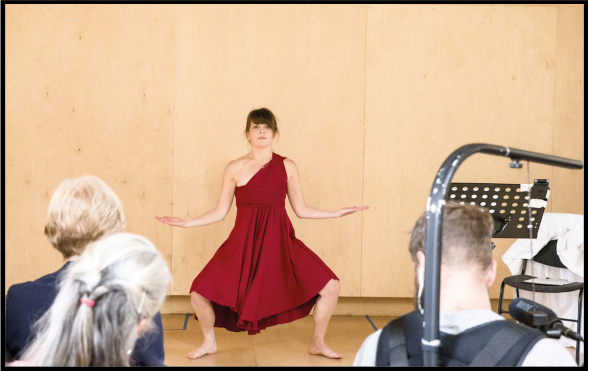
JAMIE CREWE
Tuesday 7 February 2023
We were joined by Glasgow based artist and vocalist, who discussed their recent projects and touched upon ideas of practice based research outside of academic institutions.
Jamie was a recipient of the Turner Bursaries in 2020, and has had significant solo exhibitions at Gasworks and Lux in London as well as Tramway in Glasgow and was included in the 2022 British Art Show.
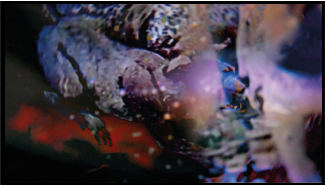
LGBT QUEER, WHERE DO WE GO FROM HERE?
TUESDAY 13 DECEMBER 2022
This session brought together invited staff and students from Northumbria University to share and discuss their research in LGBTQ+ studies

HARVEY YOUNG
TUESDAY 29 NOVEMBER 2022
Visiting Professor Harvey Young (from Boston University College of Fine Arts) joined CARF for a discussion about their work and research and upcoming tenth book, Theatre and Human Flourishing, published in 2023 by Oxford University Press
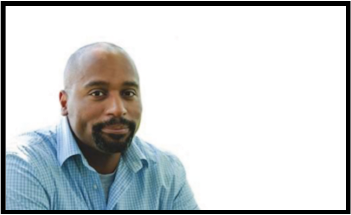
DONNA CHAMBERS
WEDNESDAY 9 NOVEMBER 2022
Professor of Creative and Cultural Management at Northumbria University, gave a presentation about recent interdisciplinary research into the importance of the ethics of love with an ethics of hospitality, providing critical reflections on the films Heading South and Paradise Love as well as the works of bell hooks and Audre Lorde
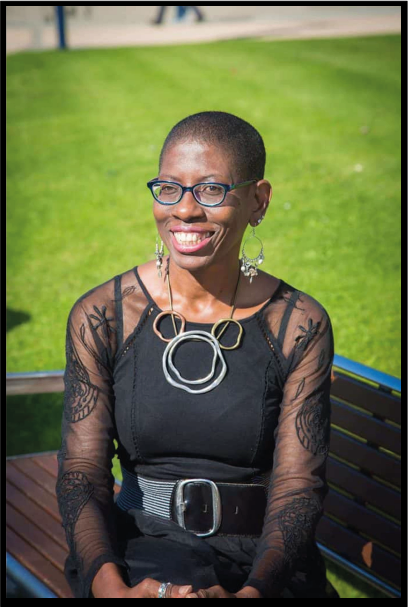
CLIO BARNARD’S THE ARBOR
TUESDAY 25 OCTOBER 2022
Clio Barnard- CLIO BARNARD Northumbria University Alumni and Director of 2010’s The Arbor (An experimental documentary about the life of playwright Andrea Dunbar) joined Professor Gavin Butt in conversation
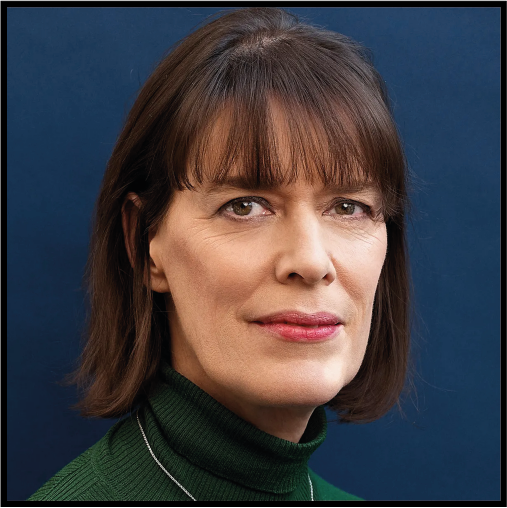
Clio Barnard
EXPERIMENT NOW SYMPOSIUM
MAY 2022
On 3 and 4 May the inaugural CARF Symposium took place on campus at Northumbria University. Further exploring the theme of “Experiment Now,” this series of presentations acted as a catalyst for CARF to become a regular in-person forum for the experimental exploration of research practices by Arts PhD researchers, academic staff and invited external contributors. Over two days CARF provided occasions for research sharing and peer-to-peer learning amongst as well as a supportive context for the presentation of new research or work-in-progress, and enhanced the national and international connectivity between research in the department and elsewhere
LESLEY GUY
MAY 4 2022. 14:00
Artist and Post-Graduate Researcher Lesley Guy performed an engaging series of texts written in response to artist Roy Claire Potter’s presentation to CARF last year
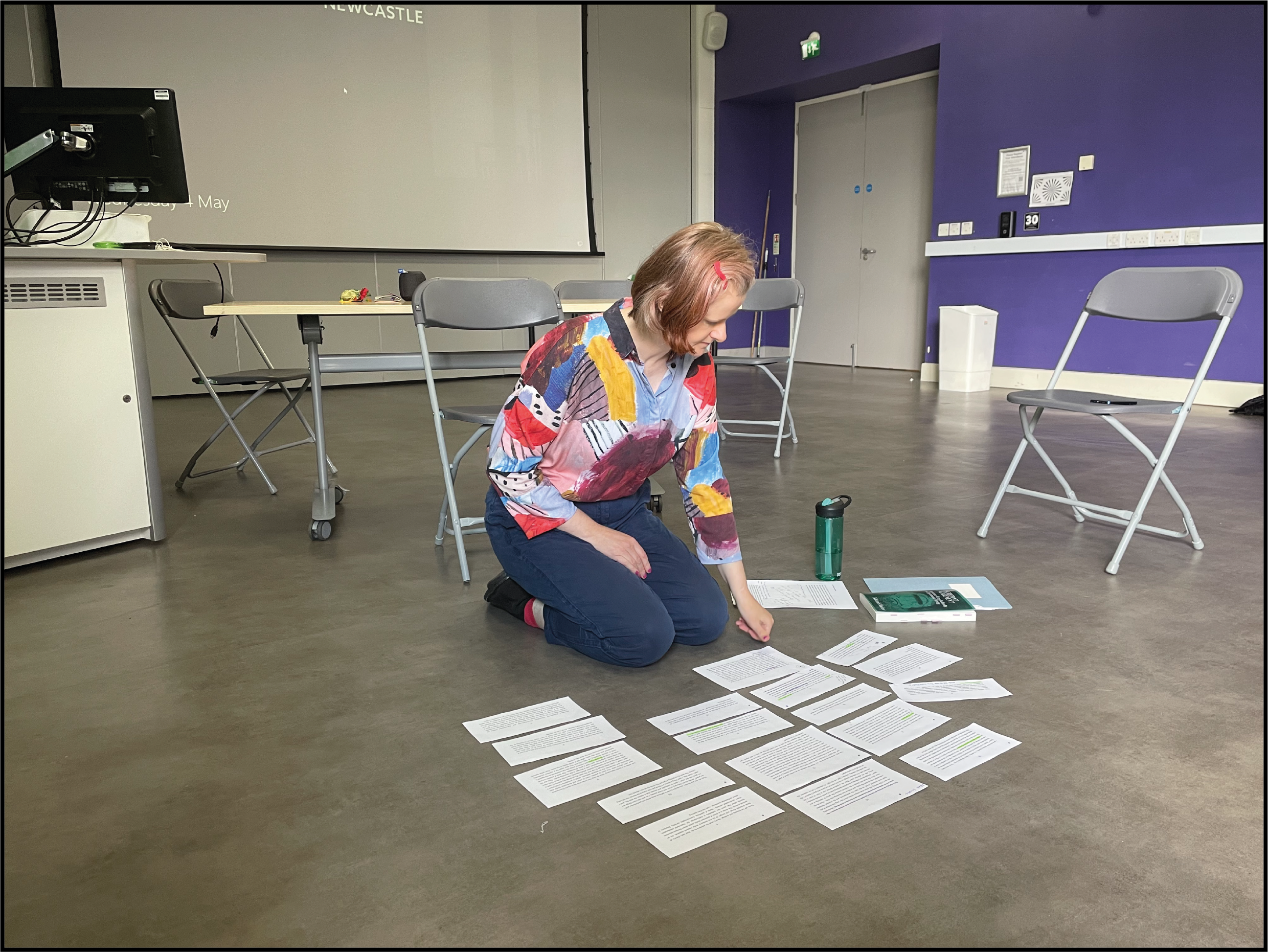
NEUSCHLOSS: CLEAVED INTO
MAY 4 2022. 13:00
Neuschloss (an irregular coalition of staff and students at northumbria) presented a selection of live readings and an interactive performance of an experimental score based on the group’s estranged interactions with Lynn Chadwick’s sculpture, The Watchers
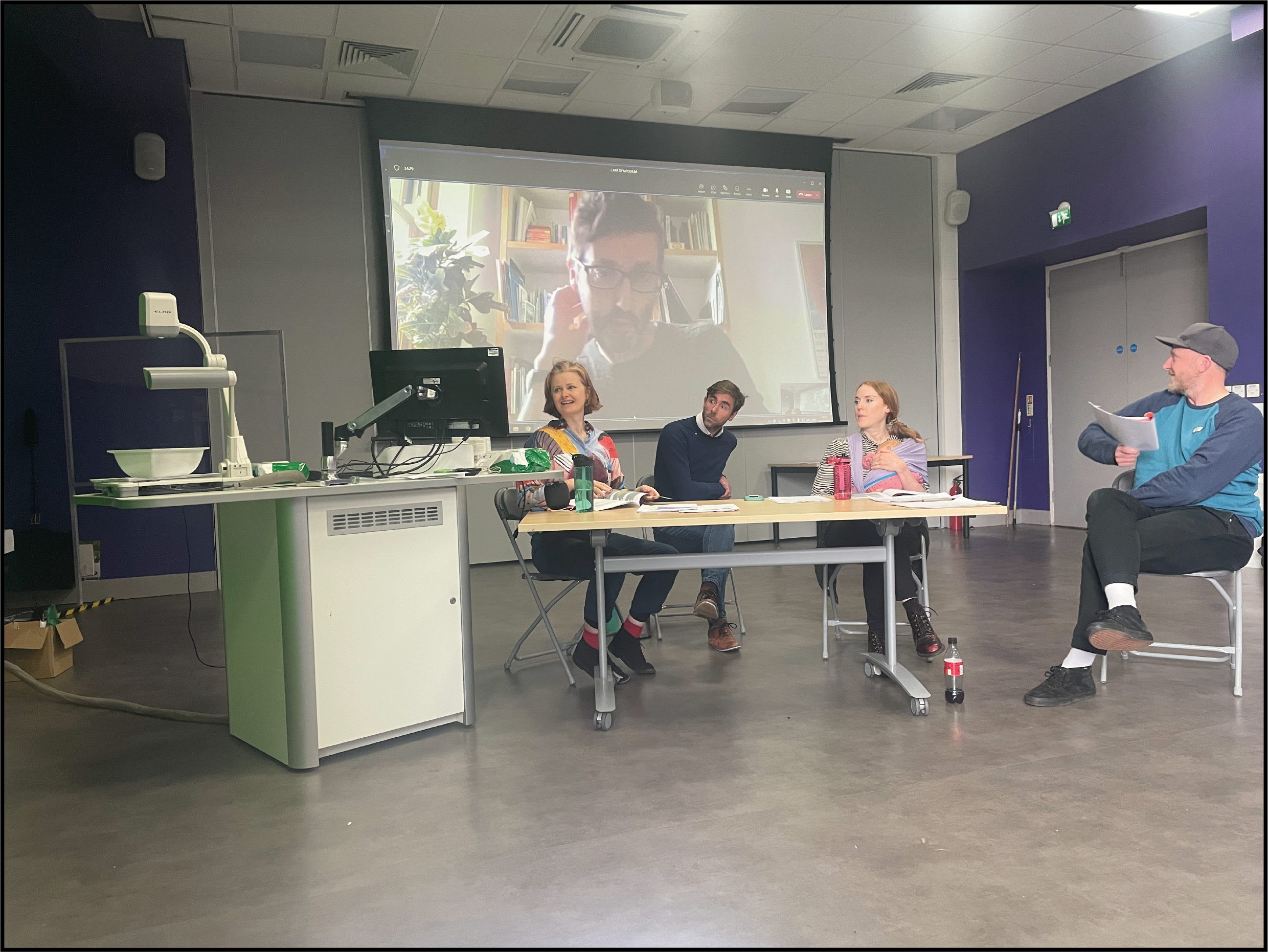
DR JULIE CRAWSHAW: DOG AESTHETICS. TOWARDS A MANIFESTO OF/FOR PRACTICE
MAY 4 2022. 11:00
Dr Julie Crawshaw used her research as a colourful provocation to explore and scrutinise the meanings attached to ‘practice’ as well as the role it plays in knowledge production and dissemination
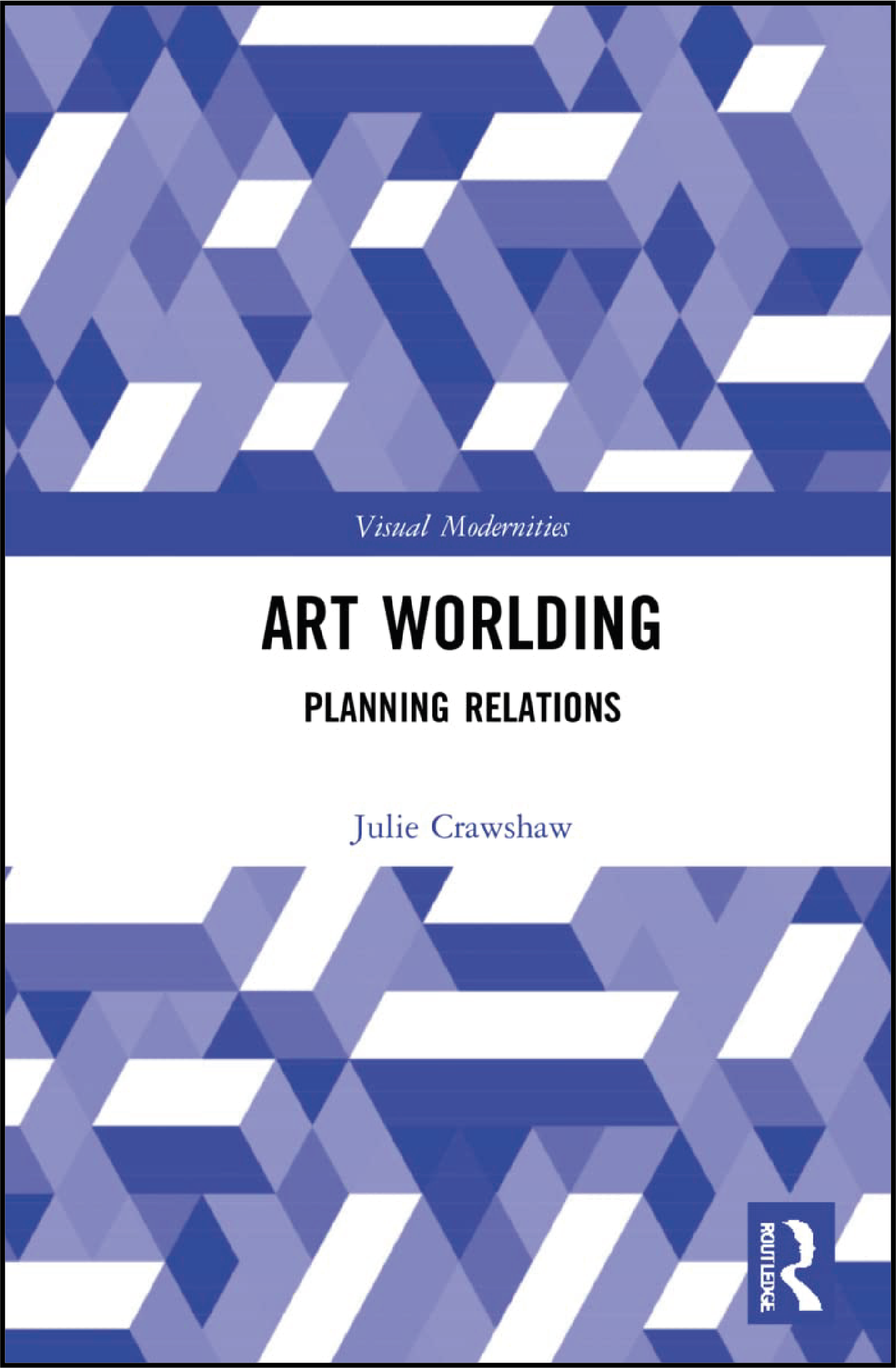
FIONA CROUCH: THE POWER OF GOING WITH THE FLOW
Post-Graduate Researcher Fiona Crouch lead a discussion about tensions between creative processes and outputs as well as the affective repercussion’s of making which exist alongside her own research
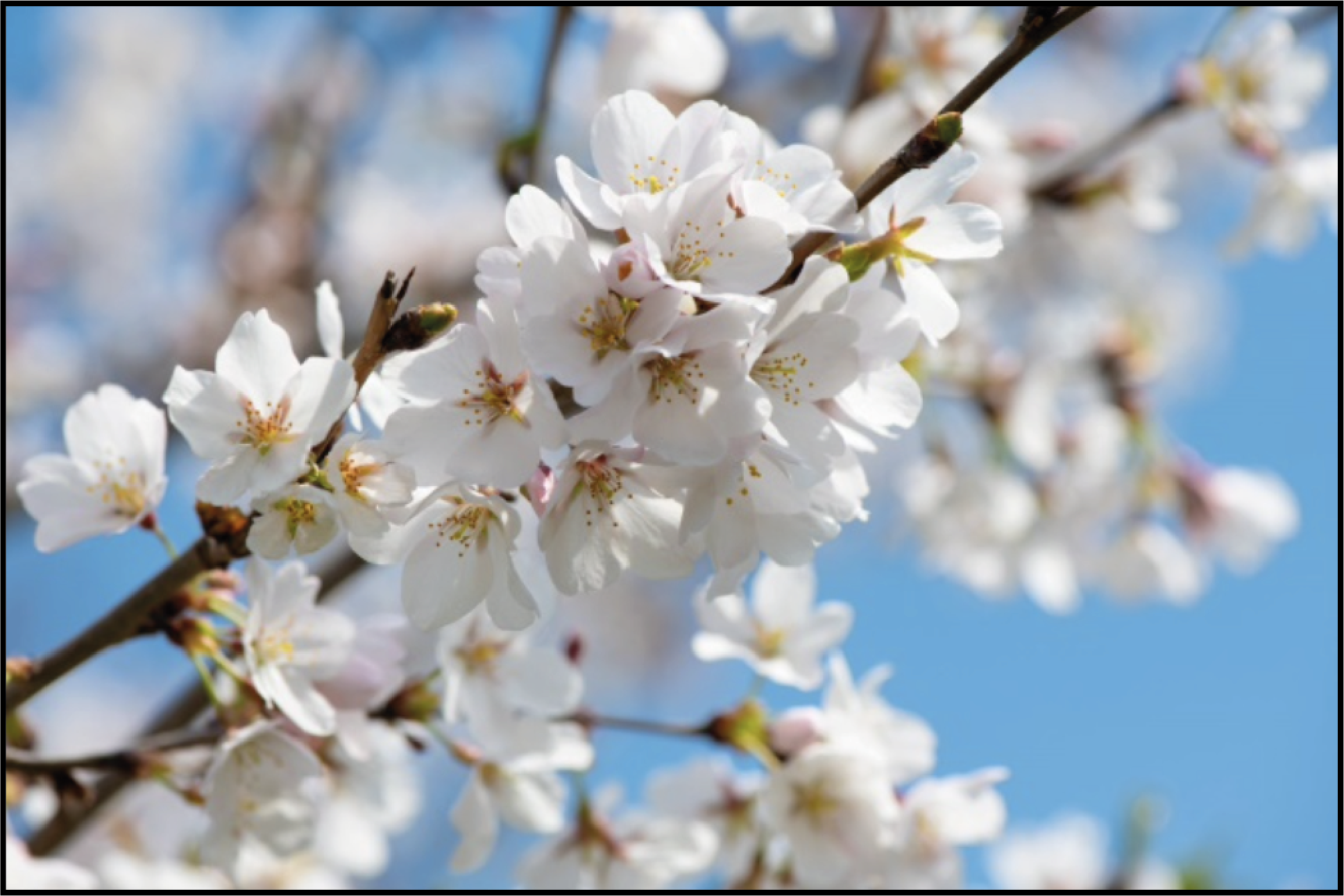
AMY DE’ATH: FEMINIZED POETRY AND READING DIALECTICALLY
MAY 3 2022. 18:00
Amy De’Ath (Lecturer in Contemporary Literature and Culture at King’s College London) gave a reading based on research into the ways in which the lives of feminized people are shaped by the abstractions of capitalist value production
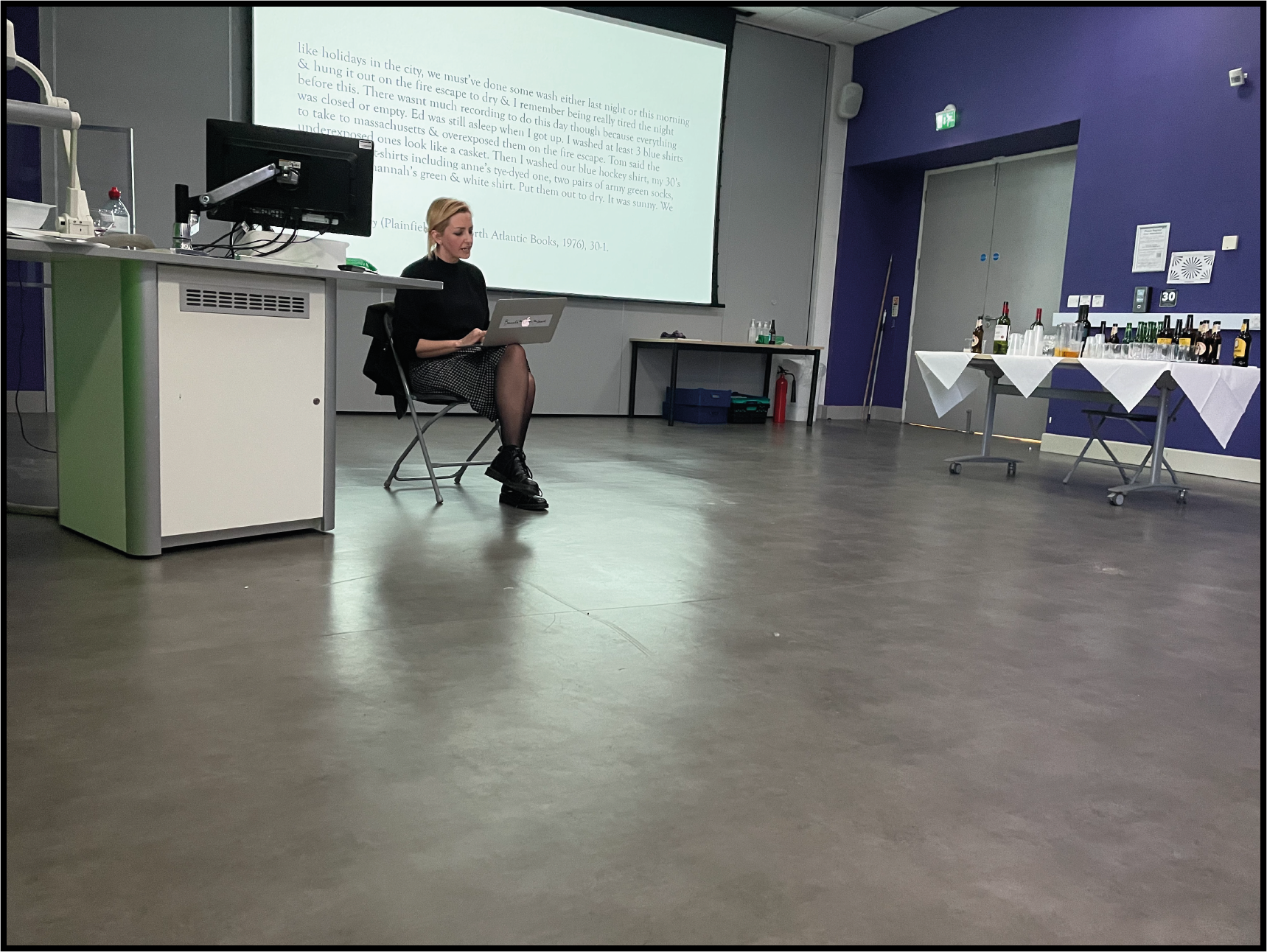
16:00 DR MARK ROHTMAA-JACKSON: COMMUNAL BUILDING-SCHOOL/ART PRACTICE AT LUNGA
MAY 3 2022. 16:00
Dr Mark Rohtmaa-Jackson presented findings from their work with LungA Artschool in Seyðisfjörður, Iceland
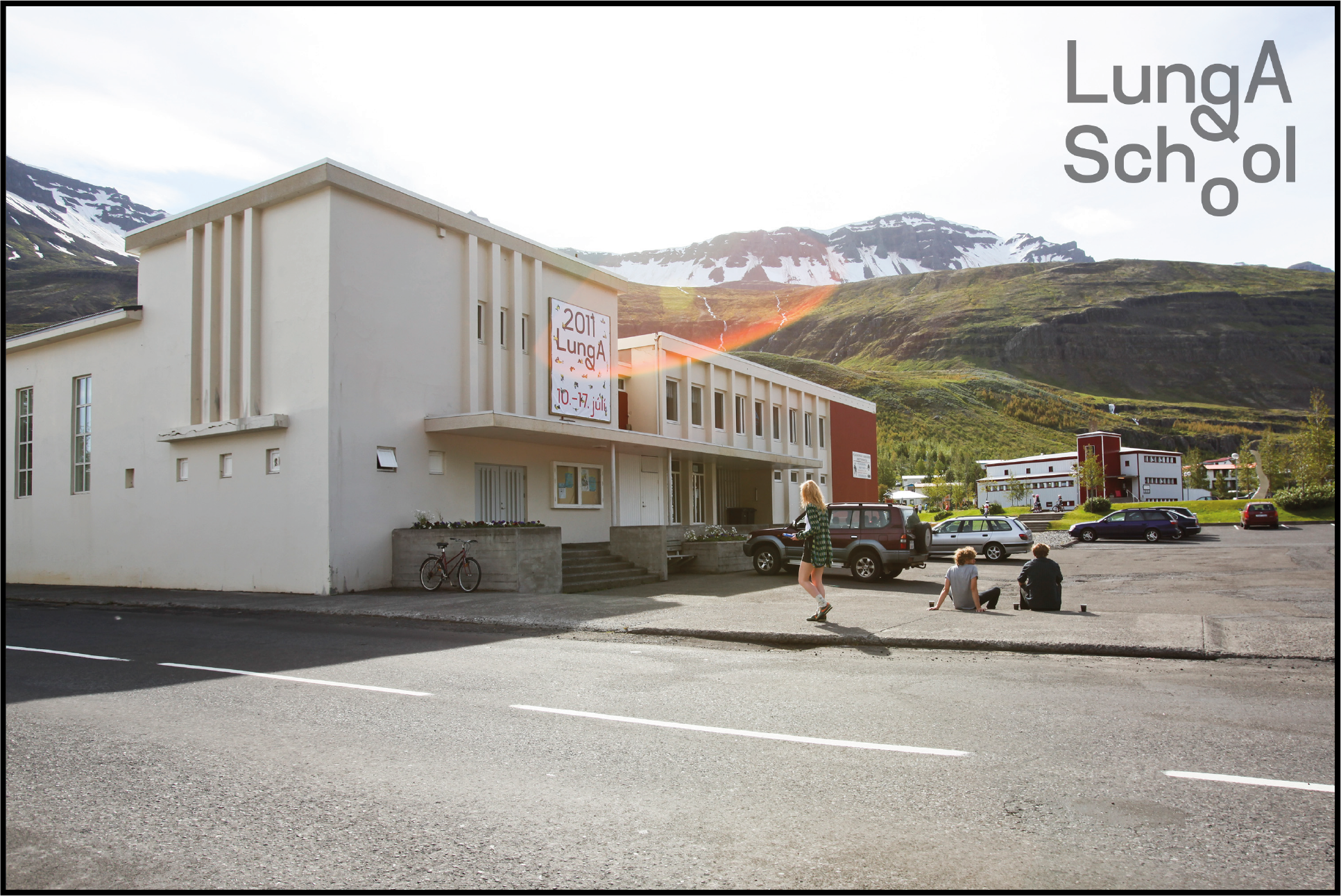
LUNGS PROJECT: IMAGINING ANEW-COLLABORATIONS AND NECESSITIES
MAY 3 2022. 14:00
Introduced by CARF co-chair Gavin Butt, the first session of the Symposium saw Sheyda Aisha Khaymaz of Lungs Project present new audio-visual work and use texts by Audio Lorde and Crustal Michelle Perkins to enter into a conversation around the themes of their collaborative publishing practice
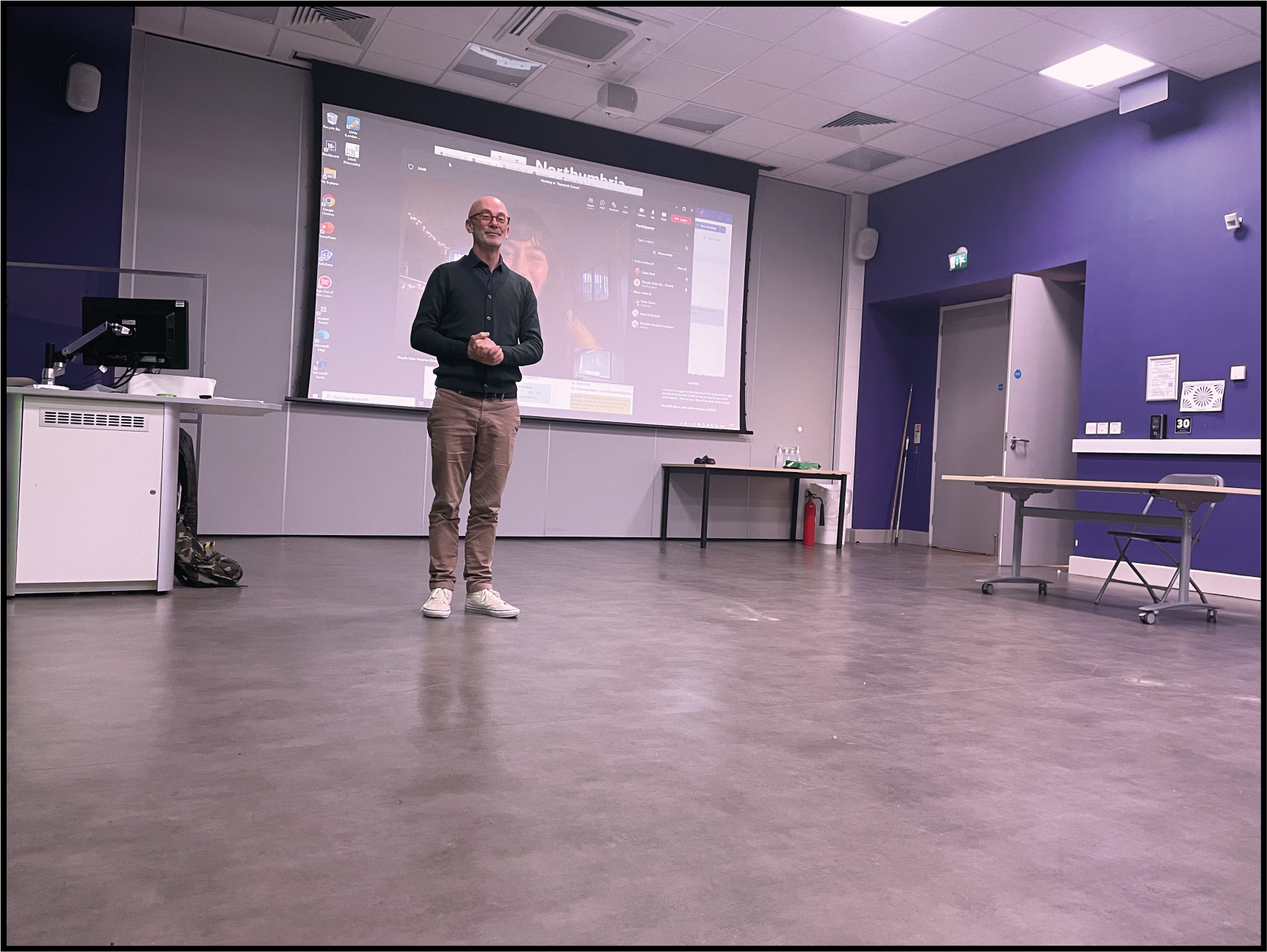
EXPERIMENT NOW
2022
CALLY SPOONER: DEADTIME
MARCH 8 2022
Cally Spooner is an artist and writer who lives and works between London and Turin. Rooted firmly in her training in philosophy, her practice is generated through writing, unfolds as performance, then lands as film, sound, sculpture, drawing or scores. Her performances incorporate duration and rehearsal as acts of resistance to corporate, digital and performative climates
For CARF’s focus on the theme of Experiment Now, Cally introduced her current project: an exhibition and opera (in progress) titled Deadtime. In Deadtime, living and mediated bodies, not always human, appear and reoccur, both vital and corpse-like. Together they stage the effects of ‘performance’ on our psychological, digital and anatomical condition, and ask how such effects may be unexpectedly transformed

CARF PRESENTS: LUKE FOWLER
FEBRUARY 8 2022
Luke gave an engaging presentation of recent docu-film works and the research techniques he employs to build these; field recoding, instrumental construction, 16mm film, archival excavation and interview
Luke Fowler is a multi award winning artist, filmmaker and musician based in Glasgow. His work explores the limits and conventions of biographical and documentary filmmaking, and has often been compared to the British Free Cinema of the 1950s. Working with archival footage, photography and sound, Fowler’s work has long asked how we come to know someone in their absence. He has explored this question by creating posthumous portraits of individuals through precise compositions of the things they have left behind: recorded images and sounds, papers and notes, artwork, the spaces through which they moved, and the testimonies of friends who remain among the living
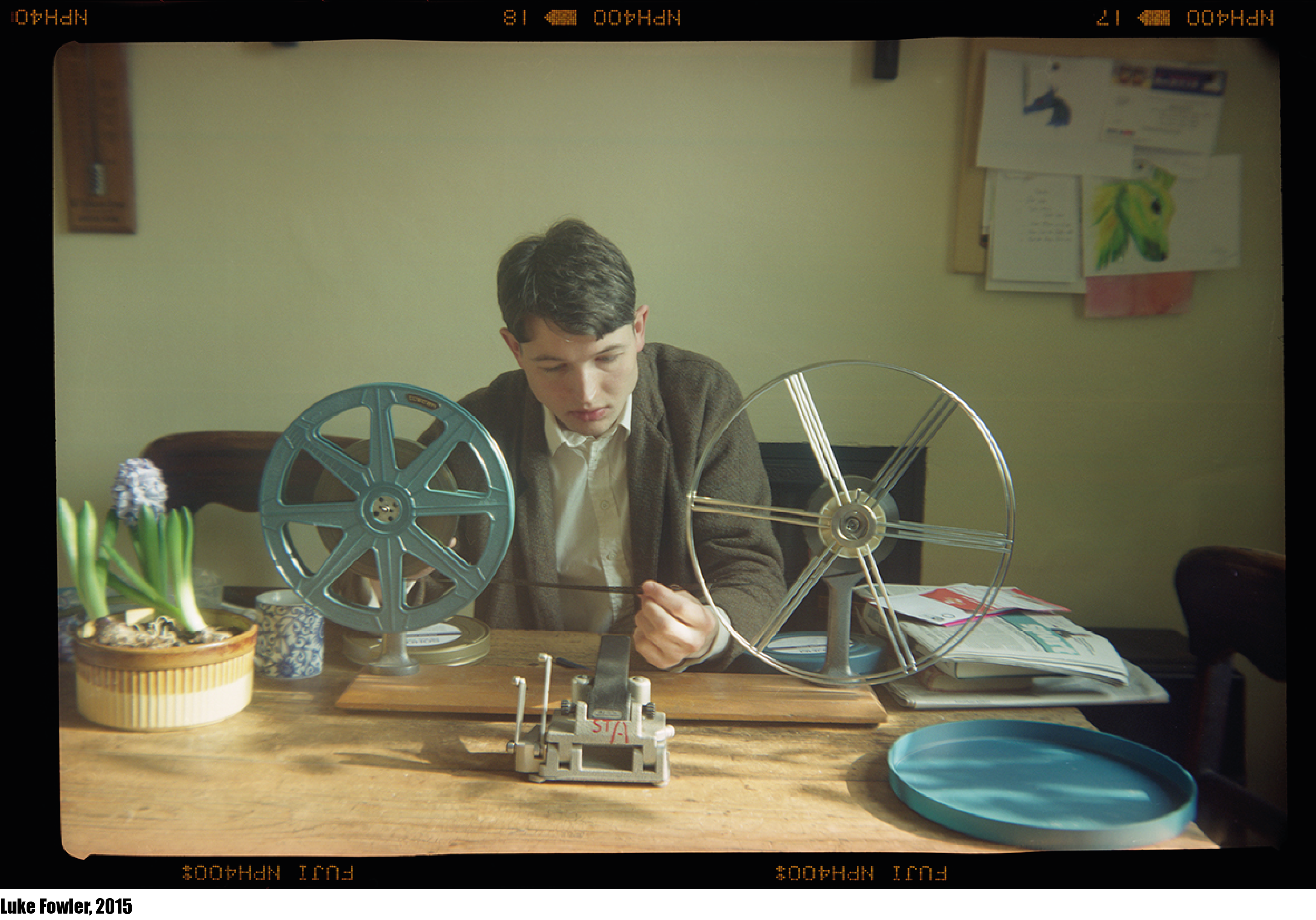
EXPERIMENT NOW
2021
OREET ASHERY: OUTSIDE THE CENTRE OF THE WORLD
DECEMBER 7 2021
Oreet Ashery, Associate Professor, Ruskin School of Art, Oxford University, is a transdisciplinary visual artist who navigates established, institutional and grassroot art and social contexts. Their work engages with biopolitical fiction, autoethnography, gender materiality and potential communities. Ashery’s practice manifests through distinct multiplatform projects that span moving-image, live situations, performance, assemblage and writing. The work turns to costume, new music/sound commissions and activism. Ashery’s practice is often collaborative, participatory and questions the modes and conditions of art production

ON COLLABORATION: PAUL KAJANDER AND HAEAHN KWON (UNIVERSITY OF GUELPH) WITH TOM O’SULLIVAN AND LESLEY GUY (NORTHUMBRIA UNIVERSITY)
DECEMBER 14 2021
HaeAhn Paul Kwon Kajander complicates the notion of individual authorship and addresses the constructedness of identity while resisting those tendencies that often force collaborative practitioners to adopt reductive brand identities
Their practice antagonises the culture of professionalism associated with patriarchal, white supremacist, settler-colonialist brutality through engagement with strategies of improvisation, the makeshift, pre-capitalist technologies, spirited resistance, joyful care and experimentalism
Tom O’Sullivan is a senior lecturer at Northumbria University who has maintained a collaborative art practice with Joanne Tatham (Royal College of Art) for over 25 Years. Their practice thinks about the forms and languages of contemporary art as a way to consider how meaning is produced. The work is often a configuration of temporary, sited ‘sculpture’ together with constructed texts, performances and images. Taken together, these elements produce spaces for audience reflection on particular contexts and the meanings art might have in these places
Lesley Guy is an artist, writer and educator based in Newcastle, UK. She graduated with an MA in Contemporary Fine Art from Sheffield Hallam University in 2010 and has exhibited across Europe, Asia and the UK. She also works as part of the collective known as TOTALLER who share beliefs around the aesthetic as a destructive, progressively utopian and totalising force


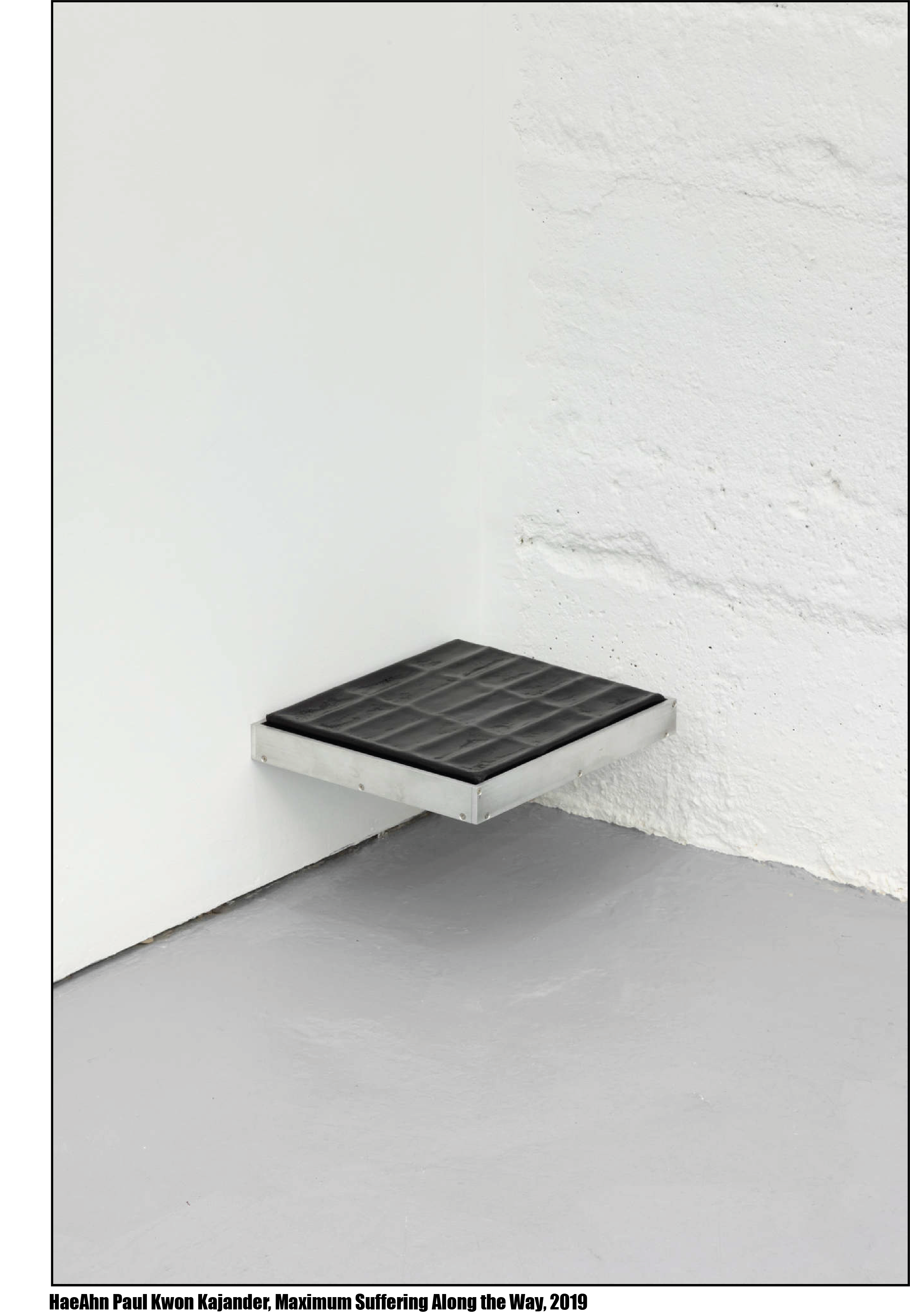
PHD ARTS RESEARCH AT NORTHUMBRIA: A SESSION DEDICATED TO THE INTRODUCTION OF CURRENT PHD RESEARCH PROJECTS PART 1
NOVEMBER 2 2021
With presentations by Post-Graduate Artists and Researchers Cat Auburn, David Reynolds and Hannah Waters

PHD ARTS RESEARCH AT NORTHUMBRIA: A SESSION DEDICATED TO THE INTRODUCTION OF CURRENT PHD RESEARCH PROJECTS PART 2
NOVEMBER 30 2021
With presentations by Post-Graduate Artists and Researchers Helen Knowles, Jasper Llewellyn and Alice Potter
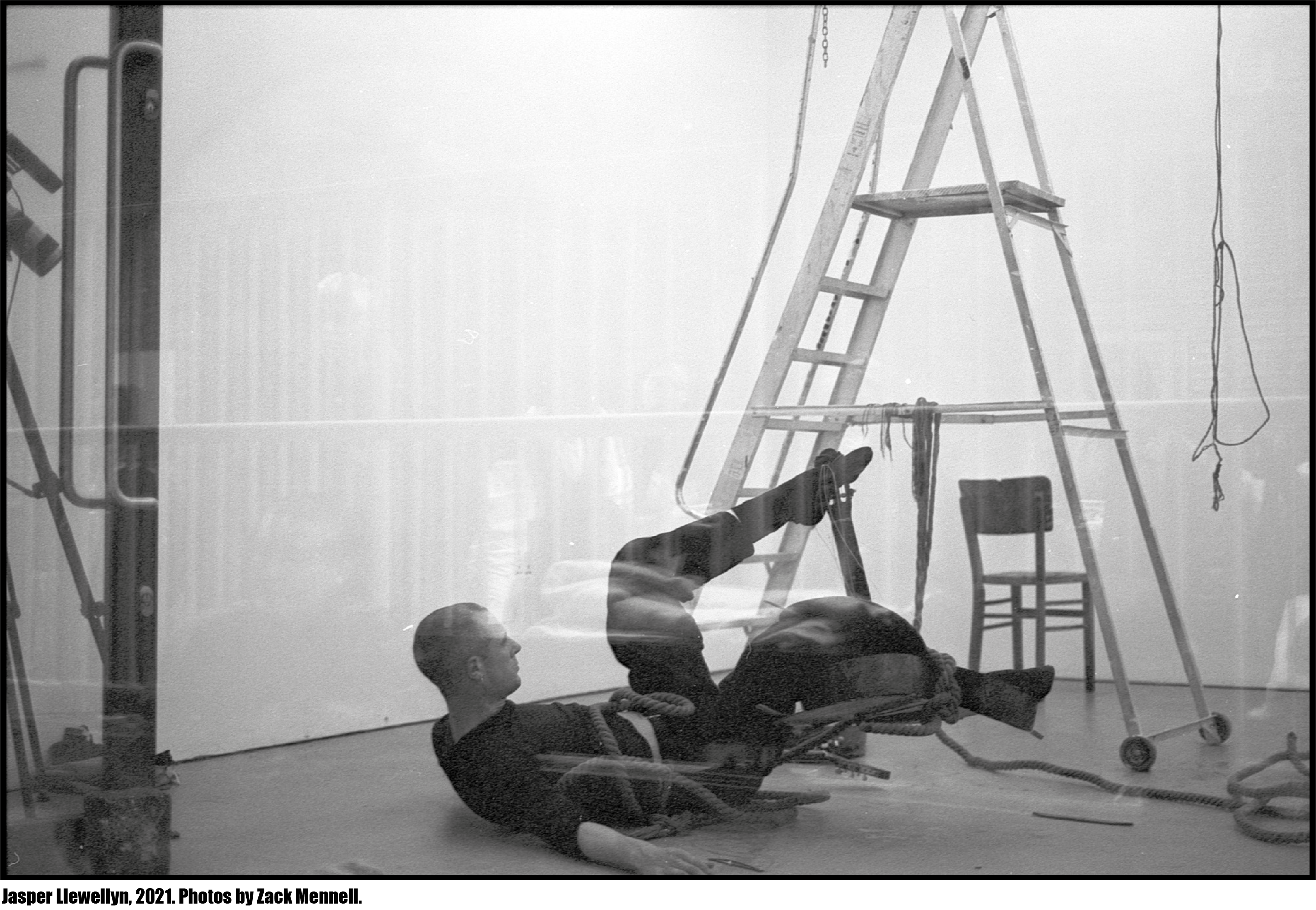
ROY CLAIRE POTTER: NOTES AND TONES
OCTOBER 19 2021
Roy Claire Potter (Artist and Tutor, Liverpool John Moores University) makes performance, text, drawing, installation and film often collaborating with musicians and sound artists to make audio for music festivals and radio. Across the wide range of their practice, Roy tells stories built from fragmented, intense images that depict moving bodies or domestic scenes and architectural settings. Roy’s interest in subtext and narrative sequencing is felt in the way they use fast-paced talking or reading speeds, and restricted or partial views of space. Complicated social or group dynamics, and the aftermath of violent events are common themes in Roy’s work and are usually treated with a dark, sometimes wilful humour
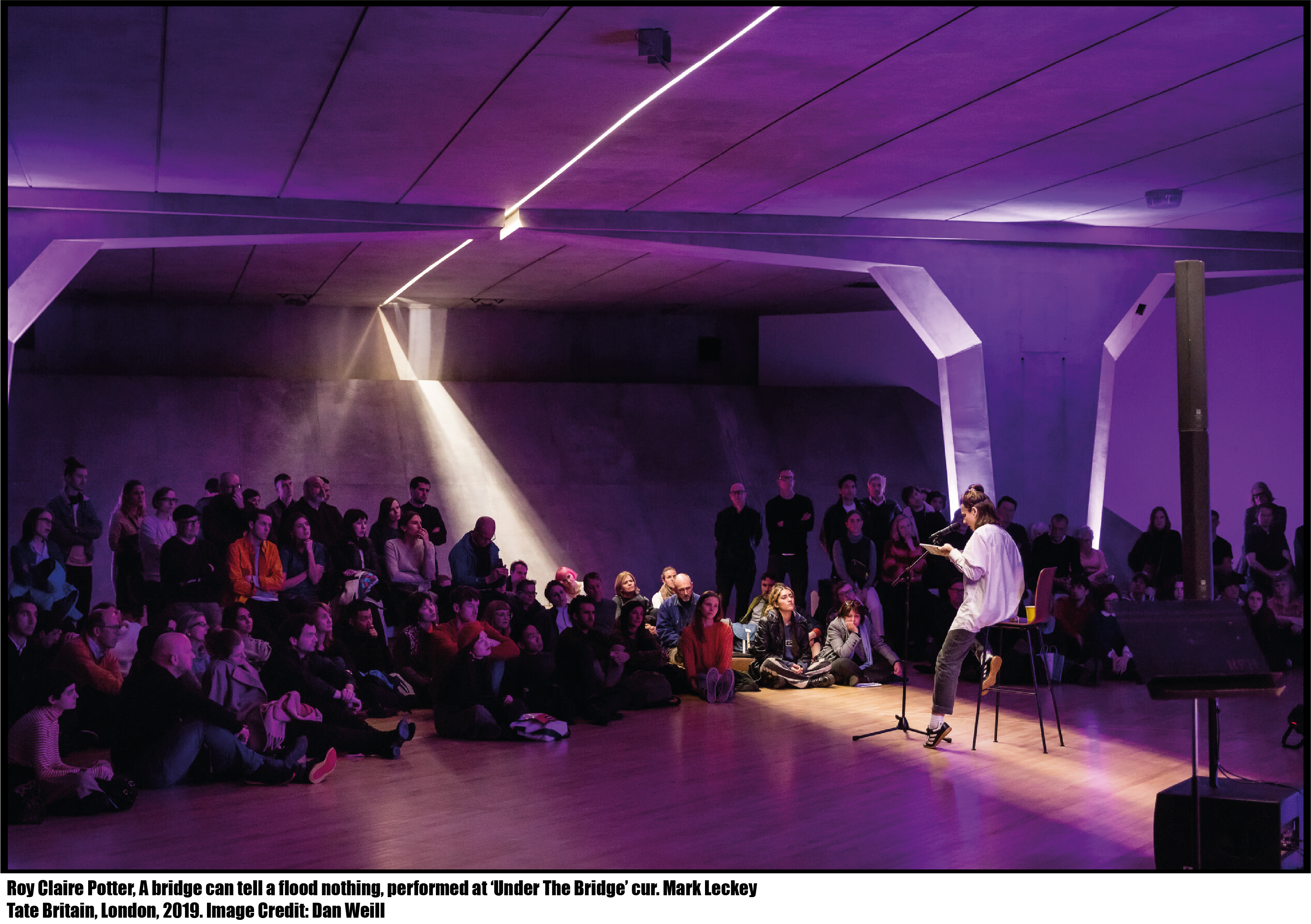
EXPERIMENT NOW: BETWEEN WRITING AND MAKING
OCTOBER 12 2021
A seminar centred around an opening discussion of two texts:
Saidiya Hartman, Wayward Lives, Beautiful Experiments (Serpent’s Tail, 2021) pp. 1-35
Donna Haraway, ‘The Camille Stories: Children of Compost’, in Staying with the Trouble: Making Kin in the Cthulucene (Duke University Press, 2016), pp. 134-168

CARF AND BXNU HOSTS PATRICK STAFF IN CONVERSATION WITH GAVIN BUTT & CORIN SWORN
MAY 25 2021
Based in London and Los Angeles, P. Staff is an artist working with film, installation, performance and new media
“I’m not interested in physical purity but I am interested in what I am a conduit for, and leading with that type of somatic inquiry” P. Staff

CONTESTED SPACES IN MOMENTS OF CRISIS
MARCH 11 2021
Performance Artists and Academics Patrick Duggan and Sandra Johnston will share their respective research exploring politicised discourses about performing bodies in New Orleans and Dublin, and the ways in which such bodies might intervene in, or give voice to, contexts of trauma, crisis and resilience
Joining Northumbria University in March 2020, Patrick Duggan is Associate Professor of Performance and Culture, and Head of Theatre and Performance. He was visiting Professor of Cultural Theory and Performance at the University of Hildesheim in Germany, Aug 2019 – Aug 2020. Before joining Northumbria, Patrick held substantive academic posts at the Universities of Surrey, Exeter and Northampton
Sandra Johnston has been active internationally as an artist since 1992 in the field of site-responsive enquiry into ‘contested spaces’ working predominantly through performance art and video/audio installations. Between 2012-2021 she was joint-lead on the BxNU MFA programme at Northumbria University, England. Additionally, she has been committed to long-term exploration of the collaborative process of improvisation; facilitating workshop encounters alongside engaging with the development and sustainability of creative networks
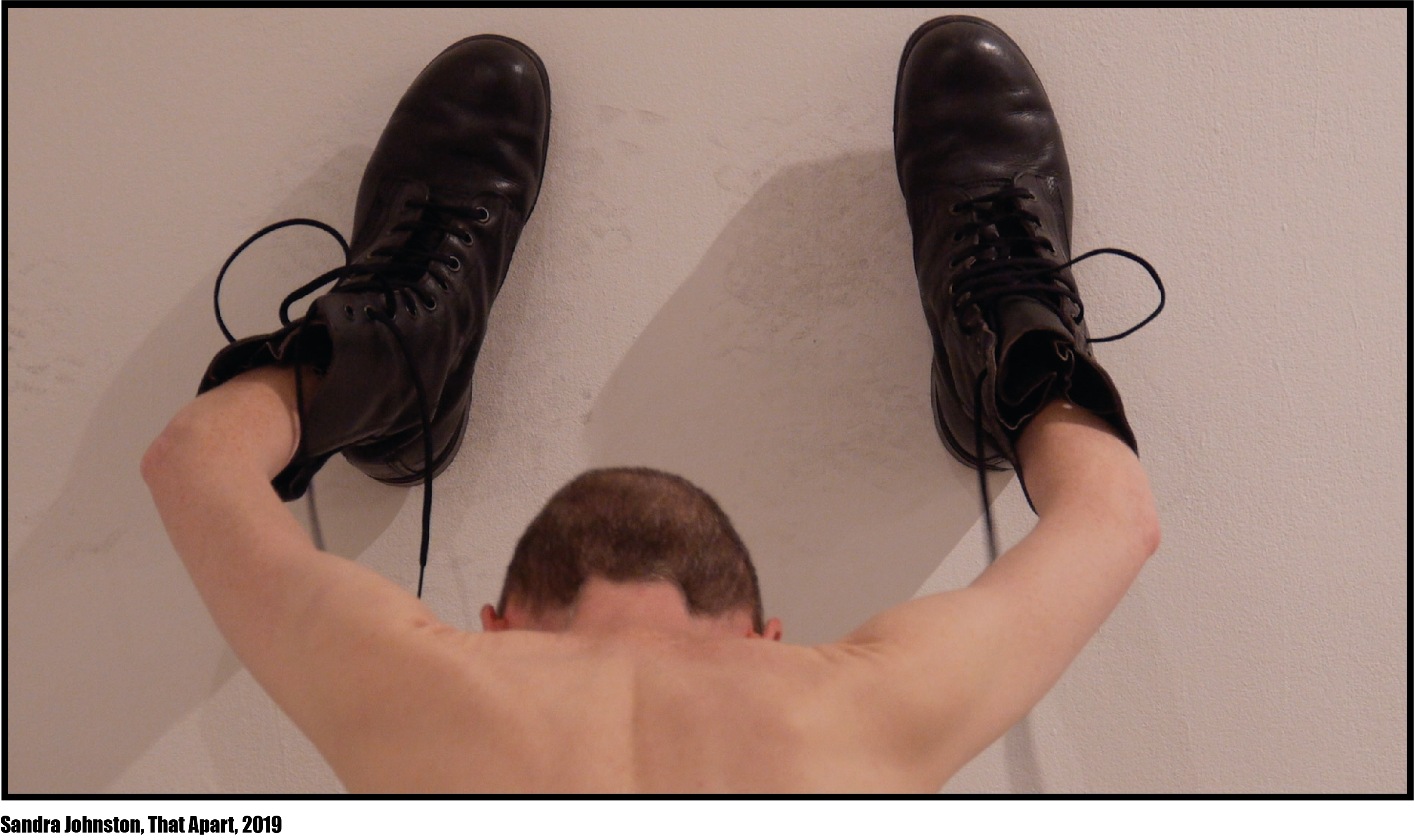
SHIFTING THE LOGICS OF OVER THERE
THINKING ABOUT AND PRACTICING MATERIAL VITALISM WITH DR RONA LEE AND DR JULIE CRAWSHAW
FEBRUARY 11 2021
This discussion introduced the problems around dualistic environmental logics and an immediacy of need in rethinking ways to consider and practice human /non-human relations
Rona Lee was previously Professor of Fine Art at Northumbria University. She is as an artist who specialises in critically engaged fine art practices, working in an eclectic and expanded manner to combine different media: performance, photography, sculpture and video
Julie Crawshaw has an experimental practice developed through an interdisciplinary pathway. In tandem with artists, planners, community members and others, her research explores human non-human relations towards making future plans. Funded by the Swedish Research Council, Julie is Co Investigator of ‘Stretched: Expanding Notions of Artistic Practice Through Artist-led Cultures’ (with Valand Academy, University of Gothenburg). Before academia she worked in the arts with particular interest in the role of art in social contexts and artist-led practice. This professional experience closely informs her academic work as combining scholarship and engagement

PERFORMING RESEARCH
2020
A series of events addressing the processes and possibilities of research within, across and beyond the Arts department at Northumbria University
Under the inaugural theme of “Performing Research,” this series of events established the CARF as a regular forum for the exploration of research practices through exchanges between Arts PhD researchers, academic staff and invited external contributors. It provided occasions for research sharing and peer-to-peer learning amongst participants, and provided a supportive context for the presentation of new research or work-in-progress, and enhanced the national and international connectivity between research in the department and elsewhere
HAROLD OFFEH’S ‘COVERS’: CONNECTIONS AND DISCONNECTIONS BETWEEN AN ART PRACTICE AND A PHD
DECEMBER 10 2020
Harold Offeh is an artist working in a range of media including performance, video, photography, learning and social arts practice. Offeh is interested in the space created by the inhabiting or embodying of histories. He employs humour as a means to confront the viewer with historical narratives and contemporary culture

RACHEL HANN AND LAZLO PEARLMAN: TRANS PERFORMANCE NOW
DECEMBER 3 2020
Featuring a live exchange between Rachel Hann and Lazlo Pearlman from the Theatre and Performance subject area of the Arts dept at Northumbria followed by discussion
Dr Rachel Hann is a cultural scenographer who researches more-than-human cultures of performance design, climate crisis, and trans performance. Since 2019, Hann has been investigating trans and nonbinary approaches to performance making. This includes arguments for atmospherics as nonbinary stage aesthetics and gender-assemblages to analyse the more-than-human practices of gendering. The overall objective of this ongoing enquiry is to platform the vitality of trans and nonbinary experiences in understanding the impact of cisgenderism on artists, audiences, and academics.
Lazlo Pearlman is a performance maker and theorist whose areas of interest and expertise are gender, performance and cultural studies, queer theory, transgender studies, intersectional feminism and critical race theory. His practice specialisms are in solo performance, physical theatre, political cabaret and contemporary performance
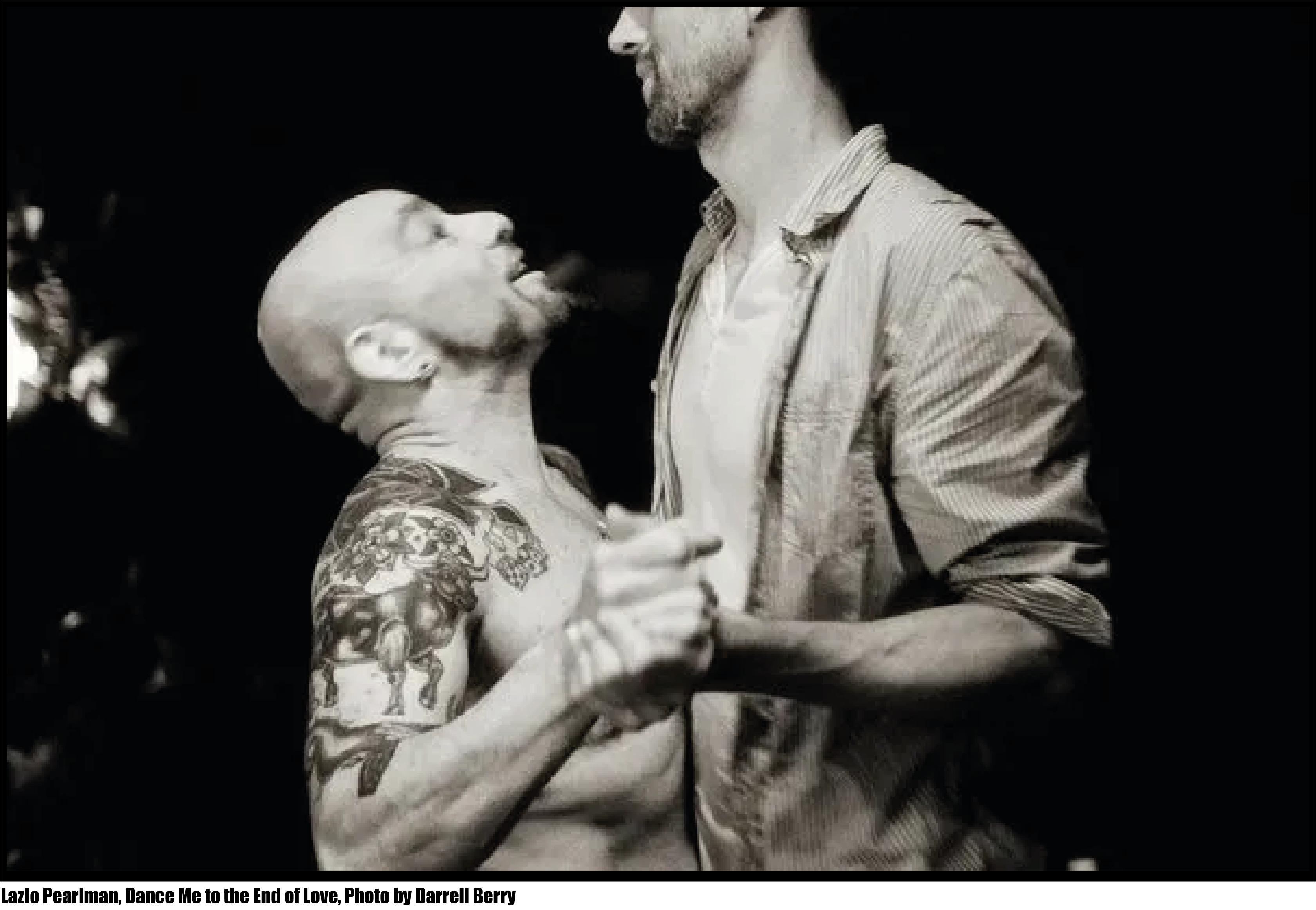
NEGOTIATING THE DISTANCE: PRACTICE BASED RESEARCH METHODS IN THE TIME OF COVID
NOVEMBER 19 2020
Members of the Cultural Negotiation of Science (CNoS) research group, Blanca Pujals and Louise Mackenzie with Professors Christine Borland and Fiona Crisp, will discuss how the practice elements of their research over recent months has been affected by this extraordinary period in history. They will invite shared responses and experiences from CARF attendees
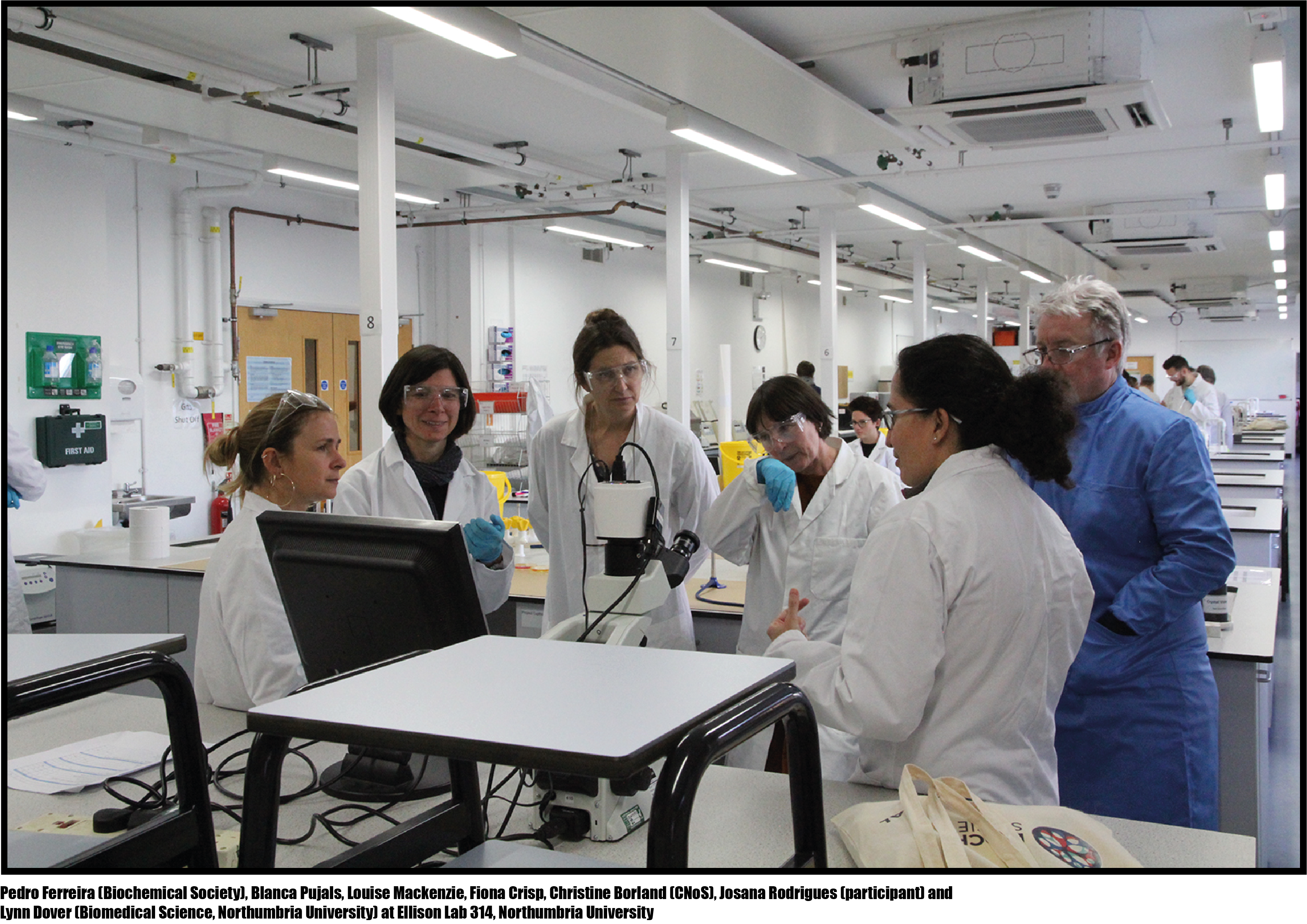
CONTROL IN ROY ASCOTT’S PEDAGOGY: THEN AND NOW,
ROY ASCOTT IN CONVERSATION WITH KATE SLOAN
NOVEMBER 12 2020
This CARF session featured a live exchange between artist Roy Ascott and Northumbria scholar Kate Sloan. Ascott is noted creator of the ‘Groundcourse’ in art education at Ealing and Ipswich in the early 1960s and recognised for his work as an artist dealing with cybernetics and technology. Sloan is author of Art, Cybernetics and Pedagogy in Post-War Britain: Roy Ascott’s Groundcourse (2019)

PHD ARTS RESEARCH AT NORTHUMBRIA: A SESSION DEDICATED TO THE INTRODUCTION OF CURRENT PHD RESEARCH PROJECTS
OCTOBER 29 2020
With presentations by Post-Graduate Artists and Researchers Cat Auburn, Verity Birt, Lesley Guy, David Reynolds and others
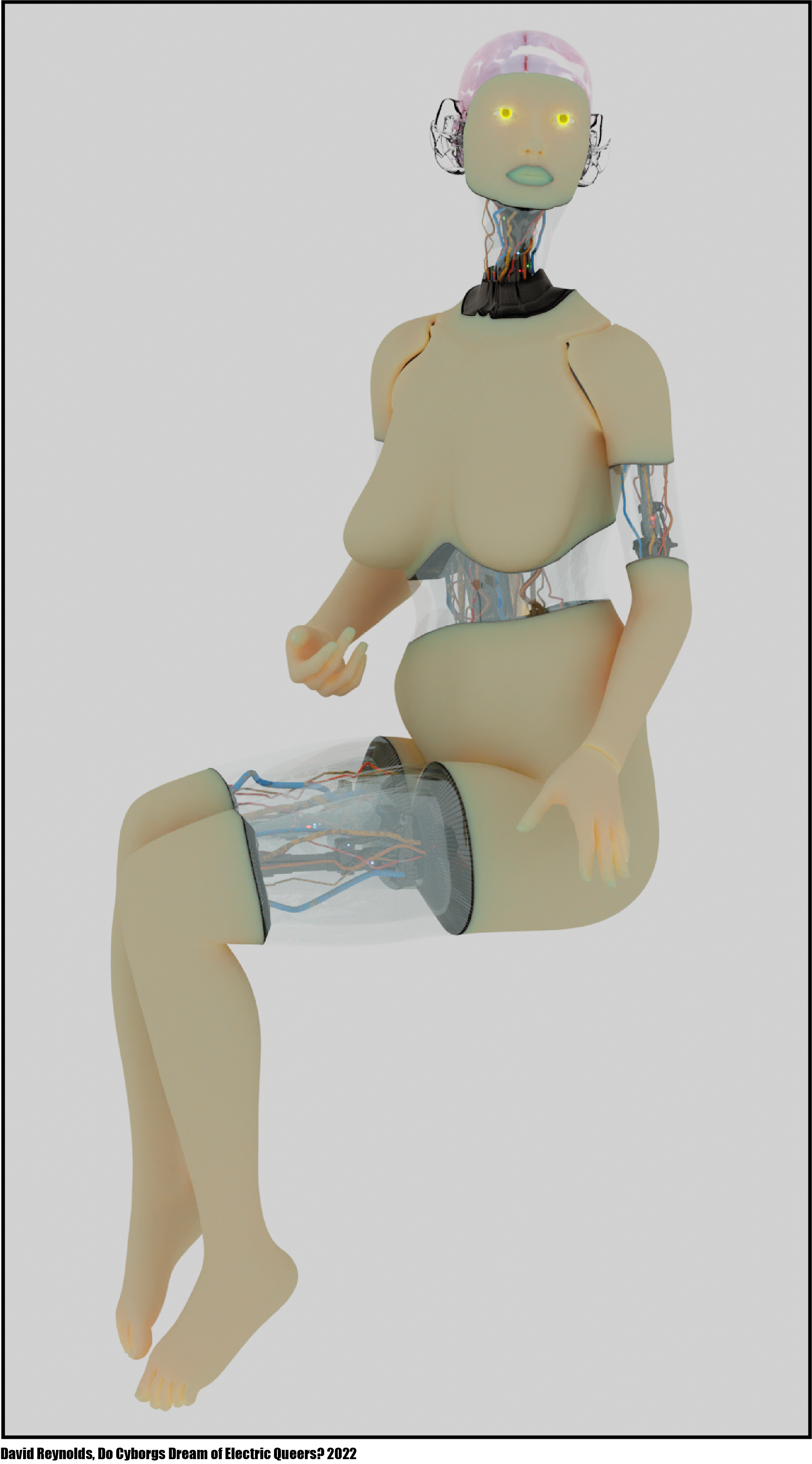
GAVIN BUTT AND CORIN SWORN PERFORMING RESEARCH: AN INTRODUCTION TO THE CARF
OCTOBER 22 2020
Professor Corin Sworn (Previously Associate Professor at the Ruskin School of Art, University of Oxford) is an artist working with performance, video, distributed narrative, digital collage and installation. Sworn was the winner of the 2014 Max Mara Art Prize for Women in 2014 and a recipient of the Leverhulme Prize in 2016
Gavin Butt (Formerly Professor of Visual Cultures and Performance at Goldsmiths, University of London) is a scholar of modern and contemporary art whose work contributes to the fields of art history & visual culture, performance, queer studies and popular music studies. Trained as a fine artist and art historian, he is a writer, curator and filmmaker. He is the author of Between You and Me Queer Disclosures in the New York Art World, 1948–1963 (2005) and No Machos Or Pop Stars: When the Leeds Art Experiment Went Punk (2022)
